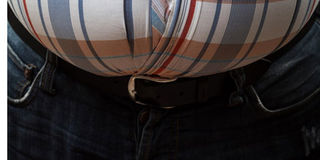Cholesterol-free? What this label really means

Clinical nutritionist Sona Parmar Mukherjee explains why you shouldn’t pay much attention to “cholesterol-free” food labels.
PHOTO| FILE| NATION MEDIA GROUP
What you need to know:
- What most people don’t realise is that the amount of cholesterol in food is insignificant compared with the amount of cholesterol that is already in our bodies.
- Eighty per cent of our body’s cholesterol is manufactured by our liver (blood cholesterol) and only 20 per cent comes from food (dietary cholesterol).
Last weekend, as I was shopping at the supermarket, I met a young mother in the cooking oil aisle with her two-year-old son.
As we both surveyed the different oils on offer, we got talking. She picked up a particular oil that had the words “cholesterol-free” on it. She reasoned, that since it was cholesterol-free, she could use it for deep-frying.
Here’s what I told her:
What most people don’t realise is that the amount of cholesterol in food is insignificant compared with the amount of cholesterol that is already in our bodies. Eighty per cent of our body’s cholesterol is manufactured by our liver (blood cholesterol) and only 20 per cent comes from food (dietary cholesterol).
Foods like eggs and prawns contain cholesterol, but the cholesterol we eat in food is digested and doesn’t affect the level of cholesterol in our blood. In fact, most studies conducted over the past two decades on cholesterol-rich foods have shown that dietary cholesterol only has a weak link, at best, to blood cholesterol levels. It is actually saturated fat and trans-fat in the diet, not dietary cholesterol, that influence blood cholesterol levels the most.
And this is why the words “cholesterol-free” on that oil are so misleading. Yes, the oil is cholesterol-free, but then so are apples and oats. Even crisps and mandazi are cholesterol-free! Simply put, these two words don’t mean a thing.
So instead, look for the level of saturated fats or trans-fats. These are what raise blood cholesterol (by stimulating your liver to up its normal cholesterol-producing function). Foods rich in saturated fat include fatty cuts of meat and full fat dairy produce.
The other baddie, trans-fat, is found in foods which contain liquid fats that have been made solid by a process called hydrogenation (that’s why they’re also called hydrogenated fats). Some margarines, biscuits, as well as many baked goods and snacks fall into this category.
Trans-fats also occur when any unsaturated fat is heated for a long period e.g. sunflower oil used in deep-frying. A small bag of crisps has been found to contain more than 25 per cent of its fats as trans-fat – below one per cent is preferable. Deep-fried foods e.g. fried chicken, chips and battered fish, are all rich in these damaged oils, in many cases containing around eight grammes of trans-fat. A doughnut may contain twice as much!
So the next time you’re out shopping and you see a food labelled “cholesterol-free”, remember that those two words don’t really mean a thing and look out for what matters.




